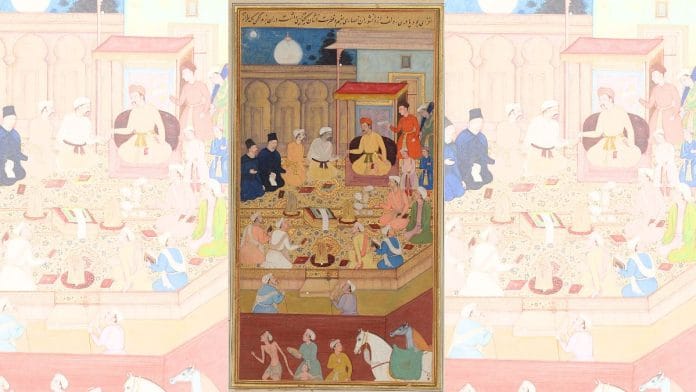Agra: There was a time when the Mughal emperor Akbar ruled over the whole of India with Fatehpur Sikri in Agra as his capital; however, this majestic red sandstone fort built in 1571 was abandoned by 1585 and gradually faded into oblivion.
The Archaeological Survey of India, established during British rule, rediscovered this fort and established it on the tourist map, and today a large number of tourists visiting the Taj Mahal from all over the world also visit Fatehpur Sikri.
An anecdote related to Fatehpur Sikri is also about the ‘Navratnas’ of Emperor Akbar. These Navratnas, a group of nine intellectual people from various backgrounds, were experts in their respective art forms and professions and had a special place in Akbar’s court. While Birbal and Tansen are two names that have gained much currency in popular culture, the rest of the Navratnas are not that well known.
To narrate the story of these Navratnas to the tourists, about seven years ago, the Agra Development Authority (ADA) had the statues of Emperor Akbar and his Navratnas specially made from Chandigarh and installed them in the ITDC’s Interpretation Center of the Gulistan Tourist Complex at a cost of about Rs 10 lakh. However, a lock was placed on the Center during the Covid pandemic in 2020, which has not been opened to date.
Vishal Sharma, secretary of the Agra Tourist Welfare Chamber, said that the statues of Emperor Akbar and his Navratnas had been installed so that the tourists visiting Fatehpur Sikri could know who Emperor Akbar’s Navratnas were, their names, and their professions.
“Seven years ago, then commissioner of Agra division, Pradeep Bhatnagar, had inaugurated Emperor Akbar’s court at the Gulistan Tourist Complex in Fatehpur Sikri on 15 March, 2016. Under these two and a half feet tall idols, full details of each of the Navratnas were written in Hindi and English languages, but since 2020 this Center is locked, and no one has bothered to open it. Depriving tourists of knowing about a major aspect of Fatehpur Sikri’s history,” Sharma added.
Shamsuddin, chief of the Agra Approved Guides Association, told ThePrint that the story of Akbar and his Navratnas is known to all, but if this Center is reopened, detailed information would be available to the tourists.
When ThePrint enquired about this with present vice chairman of ADA, Charchit Gaur, he said that these statues had been installed from the “Pathkar Fund”, but he does not know who got this Interpretation Center closed or why it is still closed. He assured that once it has been ascertained why it was closed, steps will be taken towards reopening it.
Also read: When Bengalis and Bob Dylan staged ‘Concert for Bangladesh’ to highlight genocide






